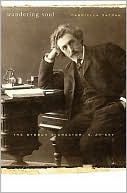Wandering Soul: The Dybbuk’s Creator, S. Ansky
by Gabriella Safran
Harvard University Press. 353 pages, $29.95
IN WANDERING SOUL, Gabriella Safran has written an erudite biography of the Yiddish radical, Russian revolutionary, writer, ethnographer, and playwright S. Ansky (or An-sky), who’s best remembered for his haunting play, The Dybbuk: Between Two Worlds. Drawing from Ansky’s own writings, Safran, who teaches Slavic literature at Stanford, depicts Ansky as a person of multiple identities and allegiances, a man in constant motion who remarked of himself: “I have neither a wife, nor children, nor a house, nor even an apartment, nor belongings, nor any settled habits.”
Ansky’s restlessness is evident early in his career and can be seen in his initial decision to change his very Jewish name from Shloyme-Zanvl Rappoport to S. Ansky. He explained this pseudonym as originating with a printer’s error, or as a way to honor his mother’s name Channa, or finally as his version of Mr. Anonymous. Similarly, his political and cultural allegiances changed from actively supporting Russian populists who wanted to save the Russian peasants to political propagandist for the revolution. He passed through a Zionist phase and later saw himself as an artist who wanted his works to immortalize the traditions, stories, and values of the shtetl, or Jewish village.
Not much has been written about Ansky’s personal life. His relationships consisted of several short-lived love affairs with women and two failed marriages. Safran suggests that he “wrestled with his sexuality.” The one connection that Ansky maintained throughout his life was with his childhood companion, Chaim Zhitlowsky, who came to be known as an early advocate of secular Yiddish culture. In a letter to his friend, he wrote: “Chaim, Chaim, how could I not love you, how could I not want to meld with you into a single soul? For a long time you were everything to me. You replaced my family, God, like a woman, and now you are and will remain for [me]the closest person on earth.”
Safran judiciously intimates that Ansky’s constant need to keep moving might stem from his flight from his sexuality as well as his commitment to radical ideas that were critical of his society. A female friend said of Ansky: “He loved women and was loved by many of them, but saved his strongest feelings for other men.” She went on to observe that the “feminine softness of his own nature makes him unconsciously, by the law of contrasts, choose some strong male figure to wind all his passionate thoughts and feelings around, as ivy winds around a strong oak tree.” Ansky was the quintessential liminal figure, the hyphenated person: a Russian Jew who lived in three languages (Russian, Yiddish, and Hebrew). He once wrote: “A writer has a difficult fate, but a Jewish writer has an especially difficult fate. His soul is torn: he lives on two streets, with three languages. It is a misfortune to live on this sort of ‘border.’ And that is what I have experienced.”
Of Ansky’s landmark work, The Dybbuk, Safran points out that “Ansky would spend the rest of his life working on this play.” The play was translated from Russian into Yiddish and then ultimately into Hebrew. Only after his death did it become the best known work of the Yiddish theater. Subtitled “Between Two Worlds,” The Dybbuk tells the tragic story of two fathers who are best friends and who contract to have their future children be married to each other. The father of the bride forgets this agreement and finds his daughter Leah a wealthy suitor—this despite the fact that she’s in love with a young, penniless rabbinical student, Hannan, who, unbeknownst to anyone, is the arranged bridegroom. The beshert (predestined) groom soon dies and becomes a “Dybbuk”—a restless soul who lives between the living and the dead—and he takes possession of Leah during her wedding ceremony.
Here Ansky presents several of his major themes: the triumph of romantic love over arranged marriages; his critique of bourgeois materialism; the value of giving a voice to women (even though it takes the form of a male spirit speaking through a woman); and the fate of those who “live on the border” with no home of their own. Ansky himself lived a rather “queer” life. He was a radical revolutionary who held on to the past, a modernist who longed for anonymity while assuming multiple identities; a romantic who dreamed of love and marriage while criticizing these institutions as bourgeois and decadent; a lover of men who could find no acceptable place within himself or in the world to express this love. Gabriella Safran has written an important book about the life of a courageous spirit.
________________________________________________________
Irene Javors, a psychotherapist in New York who teaches at Yeshiva University, is the author of Culture Notes: Essays on Sane Living (2010).






